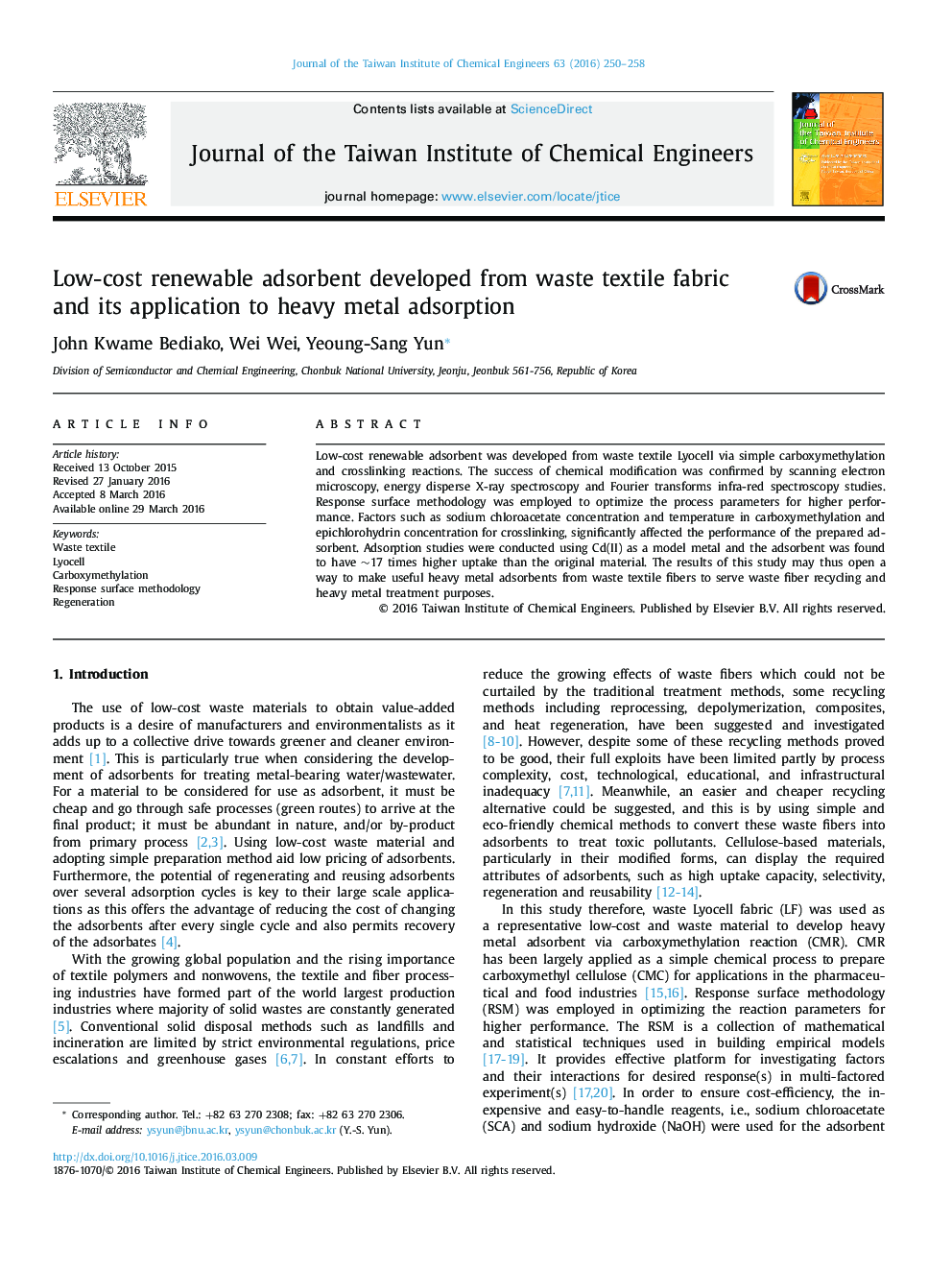| Article ID | Journal | Published Year | Pages | File Type |
|---|---|---|---|---|
| 690411 | Journal of the Taiwan Institute of Chemical Engineers | 2016 | 9 Pages |
•Low-cost and regenerable adsorbent fiber was developed from waste Lyocell fabric.•Response surface methodology was successfully used to predict effects of processing factors on the adsorbent's performance.•High uptake of Cd(II) was obtained between pH 4 and 6.•The adsorbent could be regenerated many times without much drop in efficiency.
Low-cost renewable adsorbent was developed from waste textile Lyocell via simple carboxymethylation and crosslinking reactions. The success of chemical modification was confirmed by scanning electron microscopy, energy disperse X-ray spectroscopy and Fourier transforms infra-red spectroscopy studies. Response surface methodology was employed to optimize the process parameters for higher performance. Factors such as sodium chloroacetate concentration and temperature in carboxymethylation and epichlorohydrin concentration for crosslinking, significantly affected the performance of the prepared adsorbent. Adsorption studies were conducted using Cd(II) as a model metal and the adsorbent was found to have ∼17 times higher uptake than the original material. The results of this study may thus open a way to make useful heavy metal adsorbents from waste textile fibers to serve waste fiber recycling and heavy metal treatment purposes.
Graphical abstractFigure optionsDownload full-size imageDownload as PowerPoint slide
